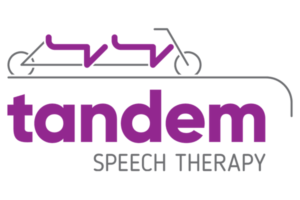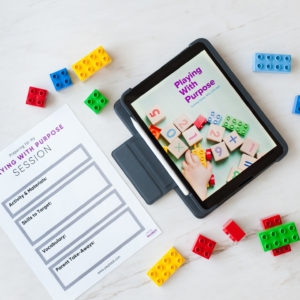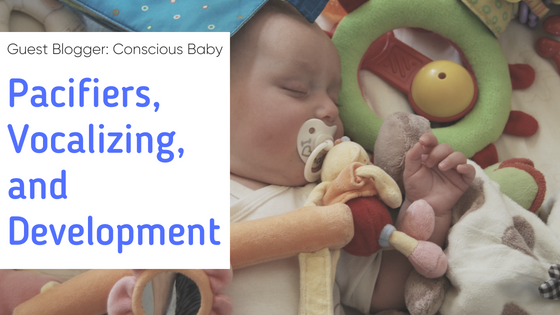
This week I am excited to welcome Eliza Parker, Infant Development Specialist, as a guest blogger for Tandem Speech Therapy. She is the owner of Conscious Baby in Austin, TX. Eliza respects babies as whole people who enter the world knowing how to communicate, learn, and self-heal within relationships. Her Conscious Baby practice employs a unique approach to baby-led “I can do it myself” milestone development, as well as attunement to non-verbal cues and crying.
“Pacifier”: what’s the first thing that comes to mind for you? This can be a loaded topic, and there’s a lot of conflicting advice. Pacifiers can have an effect on some aspects of development that might surprise you. Whether you’re pro or con, let’s dig in!
Vocalizing and Milestone Development
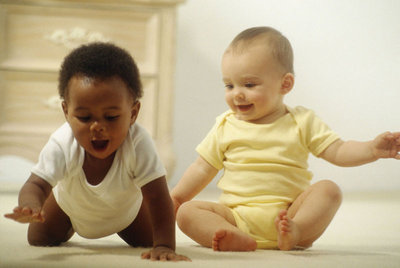
You notice Baby playing on his tummy, supporting on his elbows…he wants a toy or feels an urge…and starts pushing with his arms and grunting. Finally, he does it—he moves his whole body or gets all the way up on his hands, with a final satisfied growl or squeal!
Vocalizing is an inherent part of motor development. It’s often inseparable from movement. We vocalize to communicate, express, and release. Movement is intimately connected with self-expression—think of gestures, stances, and how your body reflects what you’re saying. Think of small children making sounds as they play and run and dance, or give voice to their dolls in pretend play, or have silly moments peppered with laughter.
Observe your baby as he moves and expresses himself. As a young baby explores pushing into the floor to lift his head or actively “mouths” his hand and wriggles, he may also make some associated grunting sounds. As he maneuvers on his tummy by pushing his body weight around, he may make some “pushy” type sounds as he finds his umph and ‘revs up his engine,’ so to speak. Later as he crawls on hands and knees, reaching forward with his hands, his sounds may become more interactive with those around him. And you may hear lovely squeals of delight as he does something new or retrieves a toy or interacts socially.
We often think of talking, or ‘using words,’ in its own line of development, as a separate occurrence. But motor skills and vocalizing grow up together—they both take shape throughout the first years of development. And it’s this vocalizing, moving, and self-expressing that eventually emerges into recognizable “speech.”
The Effects of Pacifiers
If you’re using a pacifier, this may be new information. This is not meant in judgment, and we’ll get to the why and what else. Here are some ways pacifiers can affect development:
- When a pacifier is used habitually during awake time, babies don’t have as much opportunity to experience and express the wonderful relationship between vocalizing and movement.
- All the “mouthing” of fists and toys has several benefits! There are a lot of nerve endings in the mouth—necessary for nursing—so the mouth is part of how babies learn about the world. Also, you may have heard of hand-eye coordination? Hand-to-mouth is also a very important coordination. These three work as a triad of sensory-motor coordination (hand-eye-mouth). Pacifiers can hinder these early experiences of getting hands to mouth, which can in some cases affect the ability to self-feed.
- Have you heard the phrase, “form follows function”? Our body structures will form, in part, around how we use ourselves. Habitual pacifier use can affect the shaping of the lips, the inside of the mouth, and the alignment of teeth. Some babies will retain the shape of a pacifier in their lips/mouth even when they are not actually using it.
Have you experienced your baby crying even after all immediate needs have been met?
Occasionally pacifiers are used for medical concerns about sucking. But most commonly, they’re used for “soothing,” to help babies stop crying, often by exhausted parents desperate for sleep.
Here’s the missing link. You may not know that crying itself is a need too. Of course, babies cry to communicate basic needs, such as hunger. But there’s another reason. When babies cry—beyond basic needs—they’re attempting to release stress and tell you how they feel. It’s communication!
Without this information, it can seem like babies don’t know how to stop crying and need to learn how to “self-soothe.” This is where the pacifier usually comes in. When used to stop crying, a pacifier becomes connected with emotions—so whenever big feelings bubble up, babies learn to look for the pacifier. Sometimes a pacifier is only used for sleep, but even this has the same roots. And voila—a habit is formed.
Why a Pacifier Habit Gets Set-Up
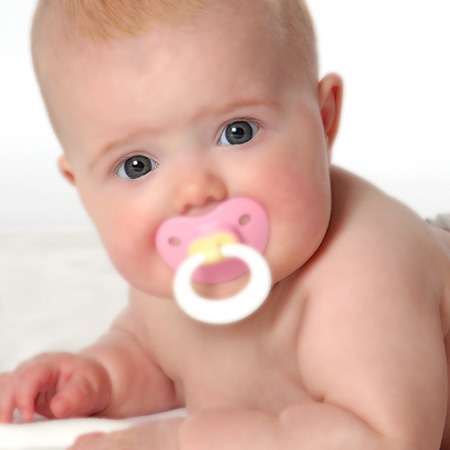
What you can do in place of a pacifier
I’ll be honest. The answer is simple in theory, not as simple in practice for everyone. But there are immense gems on the other side! So don’t be afraid to be curious…
When allowed to cry while being held, loved, and accepted, babies will naturally find balance. This is very, very different from “cry it out.” In Aware Parenting, we call this “crying in arms.”
The typical goal of pacifier use is soothing. While it can appear that a baby is calm or ‘soothed,’ those big feelings that have not been let out are still abiding under the surface. Ask yourself what would Baby do if he didn’t have the pacifier? The answer is usually …cry! Crying in arms is the release of the very stress that’s disrupting your baby’s ability to remain calm—meaning, crying is a solution and it’s naturally self-regulating. A release cry can be long, but it does have an end. So the true underlying need is not to learn how to self-soothe, but to release all those pent-up feelings. Be curious what’s hiding behind the pacifier!
Freedom of expression is really freedom of movement, vocalizing, and feelings.
For all areas of development to proceed optimally, babies and toddlers need to find as much freedom of flow as possible in their movement and emotions, both of which happen in conjunction with vocalizing of all sorts! They wish to express themselves fully in all ways. A pacifier can be like a plug for this flow they innately attempt to establish.
If you use a pacifier and would like to make a shift, know that it’s not just about weaning or taking it away. Very importantly, it’s also about allowing what will arise in place of it—the release of big feelings. During the process, hold your baby (or stay present with your toddler), make eye contact, and explain to him that he can cry if he needs to instead and that you want to listen to him.
If you feel like you’re taking something away, think of it as what you’re giving. It’s an immense gift to hold space for someone and truly be present with their authentic expression. You’re opening the door for vocalizing, but also for honesty in communication, lifelong sharing of deepest feelings, a deep feeling of confidence, and a free flow of life energy for your child to pursue his development—and his dreams!
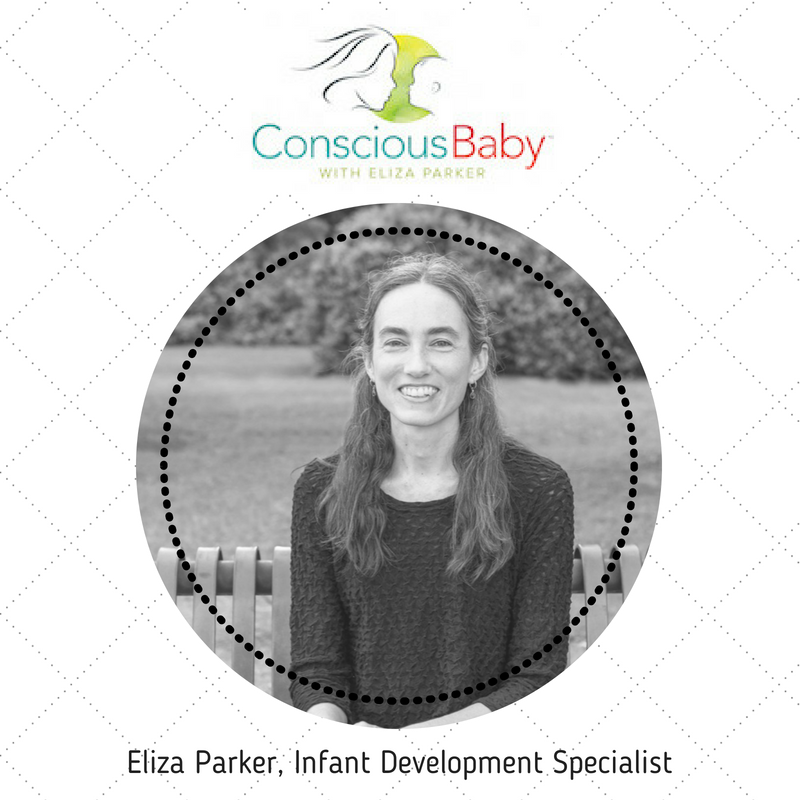
Contact:
FB: Conscious Baby
Web: http://www.consciousbaby.com
Email: eliza@ConsciousBaby.com
About Eliza and Conscious Baby
A certified Infant Developmental Movement Educator, Aware Parenting Instructor, Body-Mind Centering®Practitioner, and trained Feldenkrais®practitioner, Eliza respects babies as whole people who enter the world knowing how to communicate, learn, and self-heal within relationships. Her Conscious Baby practice employs a unique approach to baby-led “I can do it myself” milestone development, as well as attunement to non-verbal cues and crying. Eliza’s life-changing perspectives and respectful solutions toward common parenting questions transcend “typical” parenting advice. Her work addresses babies on the “well baby” spectrum and those experiencing challenges such as developmental delay.
She works with families through one-on-one consultations and group classes, both locally in Austin, TX and online. Her most popular topics of inquiry include how to track and support motor development, milestone concerns, extended crying, a non-cry-it-out approach to sleep, and healing birth trauma.
Stay tuned next week as I share how pacifier use may effect speech development!
Start Playing With Purpose
Learn how to purposefully and intentionally interact with your child during play and help them increase opportunities for speech and language development with our Playing with Purpose book!
